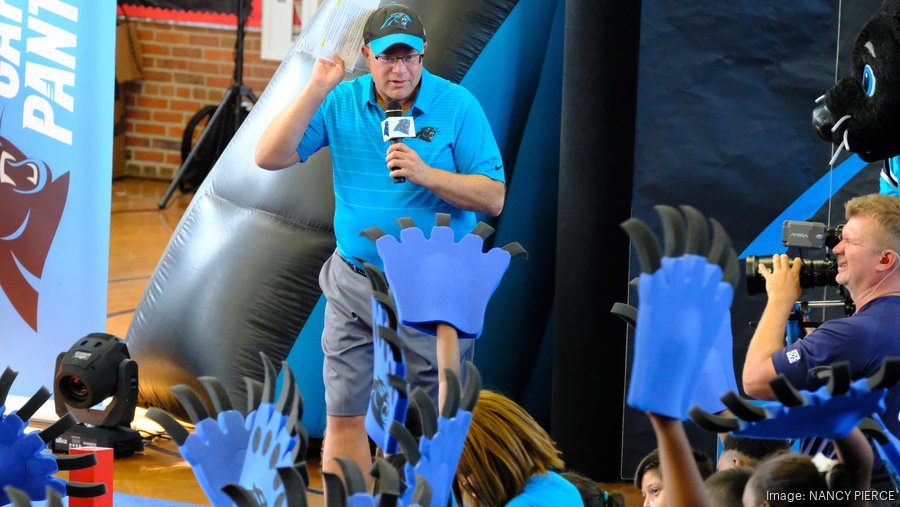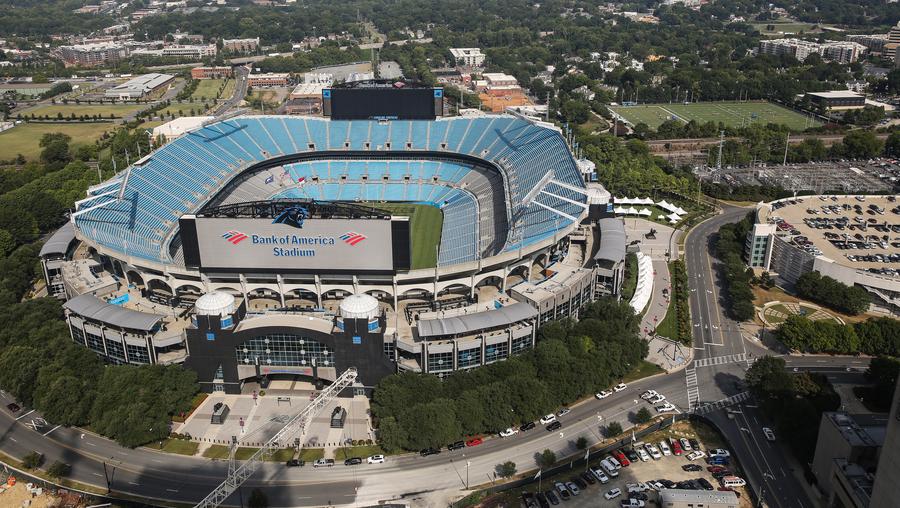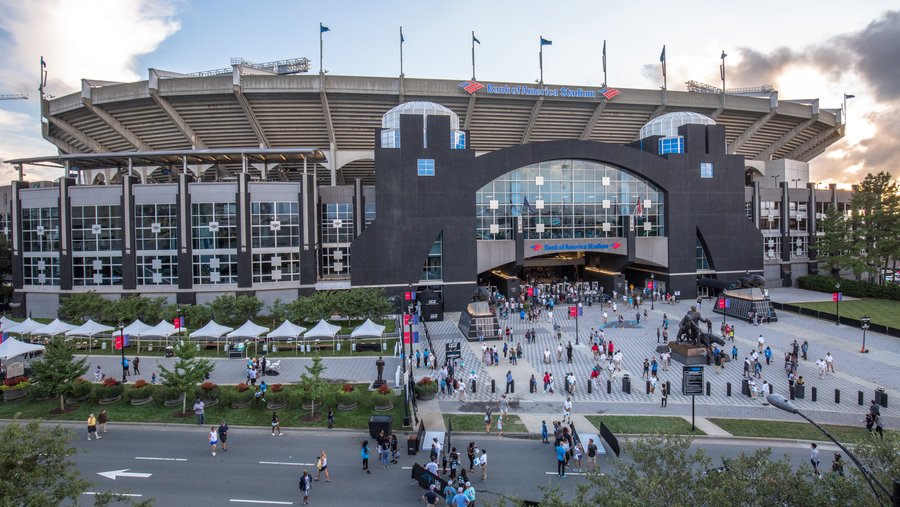During the course of an introductory lunch at Bank of America Stadium this summer, Carolina Panthers owner David Tepper and Charlotte Mayor Vi Lyles quickly found some common ground. Both are parents of daughters who are planning weddings, a topic they were happy to discuss during their meeting.
Tepper, the middle-class Pittsburgh kid who grew up to be a hedge-fund manager with a fortune estimated at $11 billion, and Lyles, the city’s first African-American female mayor who came of age during the difficult days of the segregated South, spent some time nurturing another marriage — the one between the Panthers and city government.
The next 12 months will reveal whether that partnership goes from honeymoon to solid partnership, or devolves into squabbling and recrimination. Tepper bought the NFL franchise for $2.275 billion in July from Panthers founder Jerry Richardson.
Tepper has been clear in a handful of exchanges with reporters about his business goals. He wants to figure out how to update the 22-year-old stadium to improve the fan experience and generate more revenue (not necessarily in that order), he wants the team to build a new practice and training headquarters to keep pace with the rest of the NFL, and he wants to put the 74,000-seat uptown stadium to use more often.

He’s mentioned hosting the state high school football championship, booking more concerts (under Richardson the stadium had all of two concerts in 22 years) and adding a Major League Soccer team.
Tepper has publicly said the stadium is right where it should be, but whether he thinks it can be sustained a decade or two more through renovations is unknown. If he wants a new stadium, how soon will he want it? And how much of the cost will he be willing to bear? How much taxpayer money will he want to help pay for a new stadium?
Lyles told Tepper during their initial conversations that the city wants to do all it can to ensure the NFL team stays here. A city consultant earlier this year outlined tentative plans to offer the team $75 million toward stadium improvements beginning in 2023.
The city contributed $75 million to a five-year stadium renovation project that totaled $177 million. That work wrapped up this year and included new video boards, a new sound system and escalators to the upper level. In return, the Panthers committed to stay in the current stadium for 10 years — through 2023.
At his first press conference in Charlotte, Tepper answered a question about pursuing taxpayer money for team-related projects by emphasizing benefits for all of the prospective investors. “I think there’s a lot to talk about and I think there’s some really interesting things from the development side for them and for me, for us, the Panthers, to consider,” he said.
Tepper is not just focused on the stadium. In fact, he clearly has a significant interest in exploring what can happen in the blocks nearby. That includes surface parking lots, sites already targeted for undefined development and some existing properties that are underutilized should the stadium begin generating more traffic with year-round events. A few examples:
• The imminent creation of a transportation hub, including a new Amtrak station, as part of the Gateway Station project, which is just a couple of blocks from the stadium. A number of development proposals have been floated connected to the 20-acre site. Tepper cited Gateway Station in a discussion with reporters about where he sees development headed.
• The 7-acre site near the stadium in Third Ward that now houses the Panthers practice fields. City government owns the land, part of the 33-acre property that includes the stadium. Tepper would need city approval to redevelop the practice fields for commercial purposes — think bars, restaurants and entertainment.
• The Mint Street parking deck owned by Duke Energy sits between the Panthers stadium and BB&T BallPark.
• Two sites for future development in Lincoln Harris’ 10-acre Legacy Union across South Mint Street from the stadium. A 33-story office building is under construction there now.

Stitching the stadium into the fabric of uptown in a more prominent fashion was already a goal among civic planners before Tepper bought the Panthers. Referring to the sports-anchored real estate developments sprouting up across the country, in cities including St. Louis, Atlanta and Philadelphia, Charlotte Center City Partners Chief Executive Michael Smith noted the opportunity for better linking the NFL stadium to the rest of uptown by filling in the gaps between nearby projects. Smith mentioned his hope of an extreme mixed-use environment, meaning buildings and attractions “scalable to pedestrians. It’s not monolithic.”
“You’re wrapping your arms around the stadium with a series of blocks in a mixed-use fashion,” said Brian Leary, president of commercial and mixed use at Crescent Communities, one of Charlotte’s most-active developers.
Leary broached the idea of retrofitting the 2,200-space parking deck occupying 4.8 acres on Mint Street next to the stadium. Later this year, construction will begin on an 0.7-acre sliver of the block housing that deck. The 31-story FNB Tower-Charlotte will combine 160,000 square feet of offices and 215 apartments.
The redevelopment of the practice fields should include restaurants and entertainment, but Leary suggested including some less-obvious elements, too. Mixed-income housing would be one of those. “So, the folks who might work at the stadium could live near the stadium,” he said.
An office building or two would also be a good fit, particularly since most companies and workers are using the space and adjacent parking during typical weekday business hours, making room for football fans and others in the evenings and on weekends.
Others who have been down a similar path urge caution. After a decade of starts and stops, Charlotte developer Ark Group opened what is now known as the AvidXchange Music Factory in 2009. Ark Group president Noah Lazes convinced city government to build and improve roads into the property then made up of former textile mill buildings and tucked into a hard-to-reach corner of Fourth Ward.
Today, 35 acres or so of land is occupied by offices, apartments and a slew of bars, restaurants and performance venues, including a 5,000-seat amphitheater.
AvidXchange, a homegrown financial technology firm, put its name on the complex in 2016. A year later, the company opened a 200,000-square-foot headquarters on the site. A companion building of similar scope is in the planning stages. In that context, Lazes is much more comfortable with office expansion than restaurants and entertainment.
“What you need is another destination-driven tenant,” Lazes said of possibly building on the 7 acres occupied by the practice fields. “It’s got to be something you can’t get in every city and on every corner.”
In and around uptown and South End, Lazes sees a glut of restaurants, bars and apartments.
Civic leaders see plenty of cause for optimism despite the rapid growth and potential saturation. City economic development committee leader James Mitchell drew a distinction between Richardson’s approach and Tepper’s ambitions.
“(Tepper) seems like he’s very committed to say, ‘How can I make sure that this stadium, and I, can do more for the community?’” Mitchell told CBJ. “I think having that dialogue is great because some people in the past kind of just focused on one entity and he’s been focused on how to be a more valuable partner in the community.”
BofA Stadium sits on the outer edge of uptown’s Third Ward. Just a couple of blocks inward, what used to be parking lots and not much else has morphed into a fast-growing residential hub for young professionals.
More than $700 million worth of apartments, restaurants and other projects have been built in the area in less than a decade. Overall, the residential population uptown increased by 44% over the last five years to 19,500, according to Center City Partners data.
Two projects, each with significant taxpayer funding, fueled the Third Ward boom. In 2013, Mecklenburg County opened its $11 million, 5.4-acre Romare Bearden Park. A year later, the Charlotte Knights baseball team moved into the new BB&T BallPark on South Mint Street, directly across from Bearden Park.
The county paid all construction costs for the park. City and county government contributed $8 million apiece, or $16 million total, toward the $54 million baseball stadium, with the Knights paying for the rest.
Mulling the possibilities of a Panthers-influenced district, councilman Mitchell said the potential gains are intriguing with Tepper at the helm. “He’s saying, ‘I’m willing, I want to sit down at the table.’ To me, he’s that visionary person we need to embrace to say, how do we raise our profile, (so) that we become top-tier.”
